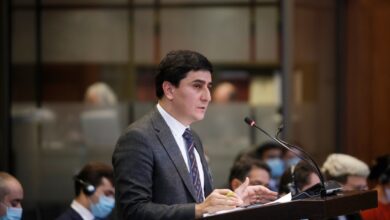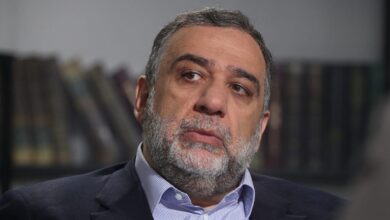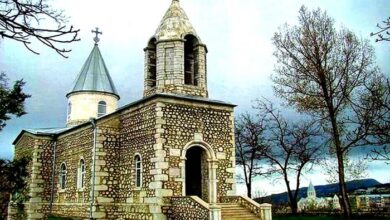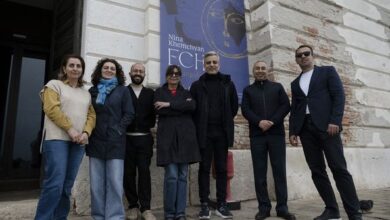Diana Markosian’s best photograph: the 105-year-old Armenian who escaped genocide

Diana Markosyan, The Guardian – This is a photo of Movses Haneshyan, seeing a picture of his former home for the first time in a century. He started to cry and then sing: “My home. My Armenia.” He touched the image as he sang, then kissed his hands, as if it might take him back.
Movses last saw his home in 1915, when he was five. When soldiers entered his village, he escaped with his father holding his hand. “Half the road was covered with dead people,” he told photographer Diana Markosyan. This marked the beginning of what Armenians refer to as the “great crime” – the genocide of the Armenian people in their homeland, now part of modern-day Turkey.
During the first world war, the Ottoman empire initiated a policy of deportations, mass murder and rape to destroy the Armenian presence within its borders. By the war’s end, more than one million people had been killed. To date, 29 countries have officially recognised the killings as genocide, but the Ottomans’ heirs in the Turkish government don’t fully acknowledge it.
In 2013, I travelled to Armenia to meet Movses and nine other survivors to ask them about those distant days. They were all frail and elderly. Three were willing to help me: Movses, Yepraksia Barseghyan-Gevorgyan and Mariam Sahakyan. We established the exact coordinates of the villages they’d left behind. I then set out to find them. Movses, who is 105, gave me a map, and I followed it as closely as I could, finding everything he had described: the sea, the tree with the fruit he remembered eating, the goats he shepherded, even the rubble of what was once his church.
Yepraksia, now 108, had escaped her village by crossing a river nearby. She watched as Armenians were killed and thrown into the water. It was “red, full of blood”, she told me. Mariam, 102, escaped to Syria with her mother and older brother, whom they dressed as a girl for safety. They hid in the grass when the soldiers came. They walked at night for three days and hid during the day. But once they got to Syria, she was separated from her family.
I took a picture of what remained in each village, and last year I brought each one back for the survivors. They grabbed at them, as if by holding them close they could be transported back there.
I am Armenian, but I was born in Moscow and raised in America. This is a part of my history, which I knew about but never fully embraced. My great-grandfather survived the genocide because his neighbours, who were Turkish, hid him. So this series was personal, a way of trying to understand that part of myself.
I had asked each of the survivors what I could do for them. Movses asked me to find his church, which was now a ruin, and leave his portrait there. Yepraksia asked me to find her lost brother, even though all she had of him was a drawing. “He liked to put me on his shoulders and play with me at the orphanage,” she said. “I don’t remember much else about him except he has blue eyes, like mine.”
Mariam asked me to go to her village and bring some soil. She wanted to be buried in it. When I did so, she opened the package and said: “You’ve brought the smell of my village to me.”








